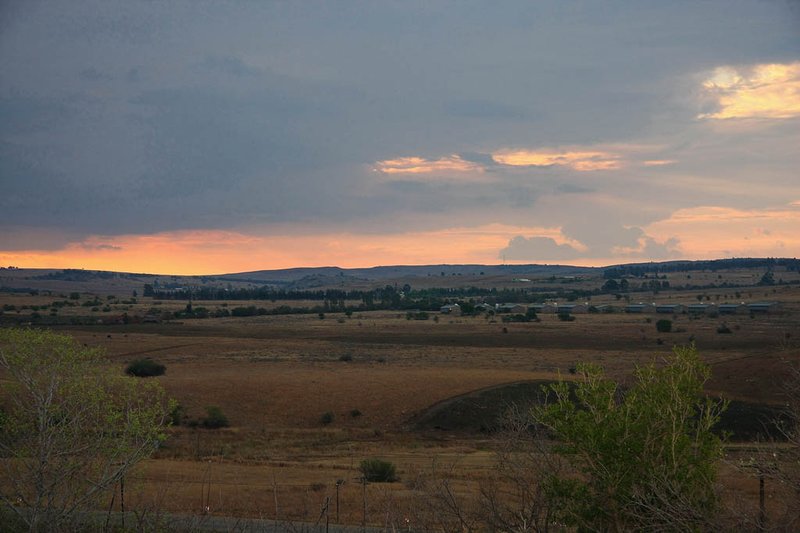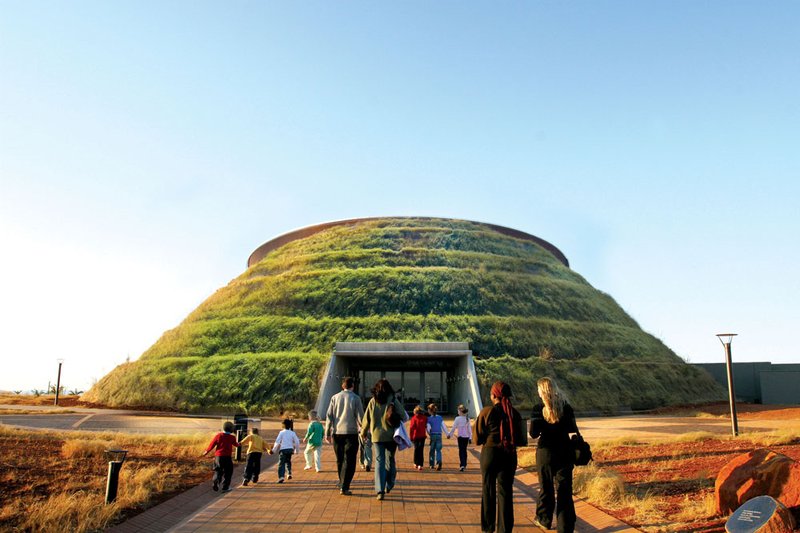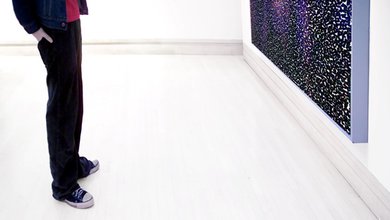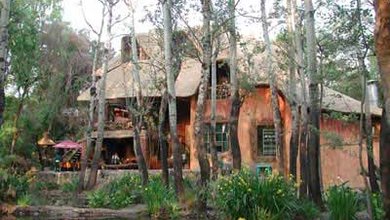A mere hour's drive from Johannesburg, the Cradle of Humankind is a place of major significance. It was here we first became human. Here where we first stood upright on our own two, rather oddly shaped, feet, explored the uses to which we could put our usefully opposed thumbs, and experimented with more and more sophisticated grunts as we tried to make sense of our environment. Its also the place where 1.8 million years ago we first "domesticated" fire.
You can do a tour of the Sterkfontein Caves, where there is a small interpretive museum, but you'll get more out of a visit here if you take a dedicated tour with a knowledgeable guide who can tell you about the various discoveries.
OK – to be perfectly honest, it's unlikely that these hominids lived only in the Sterkfontein area – they probably ranged all over southern Africa but, in order for fossils to be preserved, they need to die under ideal conditions – ideal conditions for fossil formation, not ideal conditions for life, obviously.
And the Cradle of Humankind, with its heavy deposits of limestone, offered the perfect environment for the preservation of these ancient skeletons. Since 1947, when Robert Broom discovered the first hominid fossil, who came to be known as Mrs Ples, literally thousands of fossils have been found at Sterkfontein and the other sites that make up the Cradle of Humankind.
But, even if you're not particularly interested in visiting the place where our ancestors hung out, the Cradle of Humankind is a great place to visit and it is close to Pretoria and Johannesburg. There are enough small game farms, caves, restaurants, craft shops and guesthouses to keep you occupied for a couple of days. You could even go for a hot air balloon ride. The Cradle is also close to the town of Magaliesburg and the Magaliesberg Mountains.
World Heritage Sites – Fossil Hominid Sites of Sterkfontein, Swartkrans, Kromdraai, and Environs
The Cradle of Humankind was proclaimed one of South Africa's first World Heritage Sites in 1999.
Sterkfontein, Swartkrans, Kromdraai, and Environs Krugersdorp, Gauteng S25º55'45 E27º 47'20
Makapan Valley Mokopane (Potgietersrus), Limpopo, South Africa S24º9'31 E29º10'37
Taung Skull Fossil Site Taung, North West, South Africa S27º37'10 E24º37'59
The Taung Skull Fossil Site, part of the extension, is the place where in 1924 the celebrated Taung Skull - a specimen of the species Australopithecus africanus - was found. Makapan Valley, also in the site, features in its many archaeological caves traces of human occupation and evolution dating back some 3.3 million years. The area contains essential elements that define the origin and evolution of humankind. Fossils found there have enabled the identification of several specimens of early hominids, more particularly specimens of Paranthropus, dating back between 4.5 million and 2.5 million years as well as evidence of the domestication of fire 1.8 million to 1 million years ago. It is an extension to the site inscribed in 1999.
UNESCO World Heritage Site Selection Criteria
- (iii). To bear a unique or at least exceptional testimony to a cultural tradition or to a civilization which is living or which has disappeared.
- (vi). To be directly or tangibly associated with events or living traditions, with ideas, or with beliefs, with artistic and literary works of outstanding universal significance. (The Committee considers that this criterion should preferably be used in conjunction with other criteria).
Source: UNESCO
Cradle of Humankind Fun Rating
from 488 customer reviewsPopular in Cradle of Humankind
-
Scenic Views
-
-
Hiking
-
Restaurants
-
Photography







